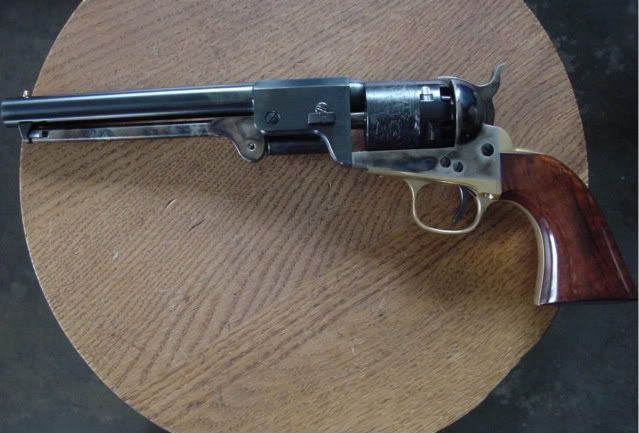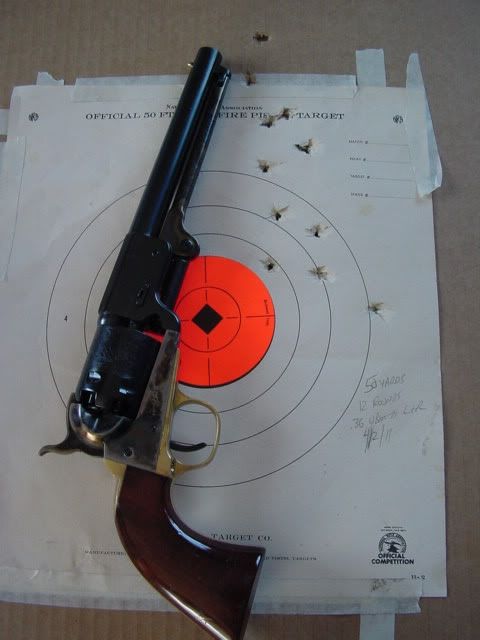I was snooting around on a different forum and found someone selling an Uberti L&R at a very good price. After kicking it around a while, I bought it.

It's not correct in that it has the Colt Navy scene on the cylinder. Apparently Uberti used to make them with plain cylinders, but it's cheaper to use the same cylinder on Colt's and L&Rs. The reason I almost passed on it was that it's an L&R copy, not a Colt copy. Finally I decided that since it's really only the barrel that makes it different from an 1851 I didn't care. Now it's grown on me. If I can get a day without thunderstorms I'll have it out on the range this weekend. :thumbsup:

It's not correct in that it has the Colt Navy scene on the cylinder. Apparently Uberti used to make them with plain cylinders, but it's cheaper to use the same cylinder on Colt's and L&Rs. The reason I almost passed on it was that it's an L&R copy, not a Colt copy. Finally I decided that since it's really only the barrel that makes it different from an 1851 I didn't care. Now it's grown on me. If I can get a day without thunderstorms I'll have it out on the range this weekend. :thumbsup:






